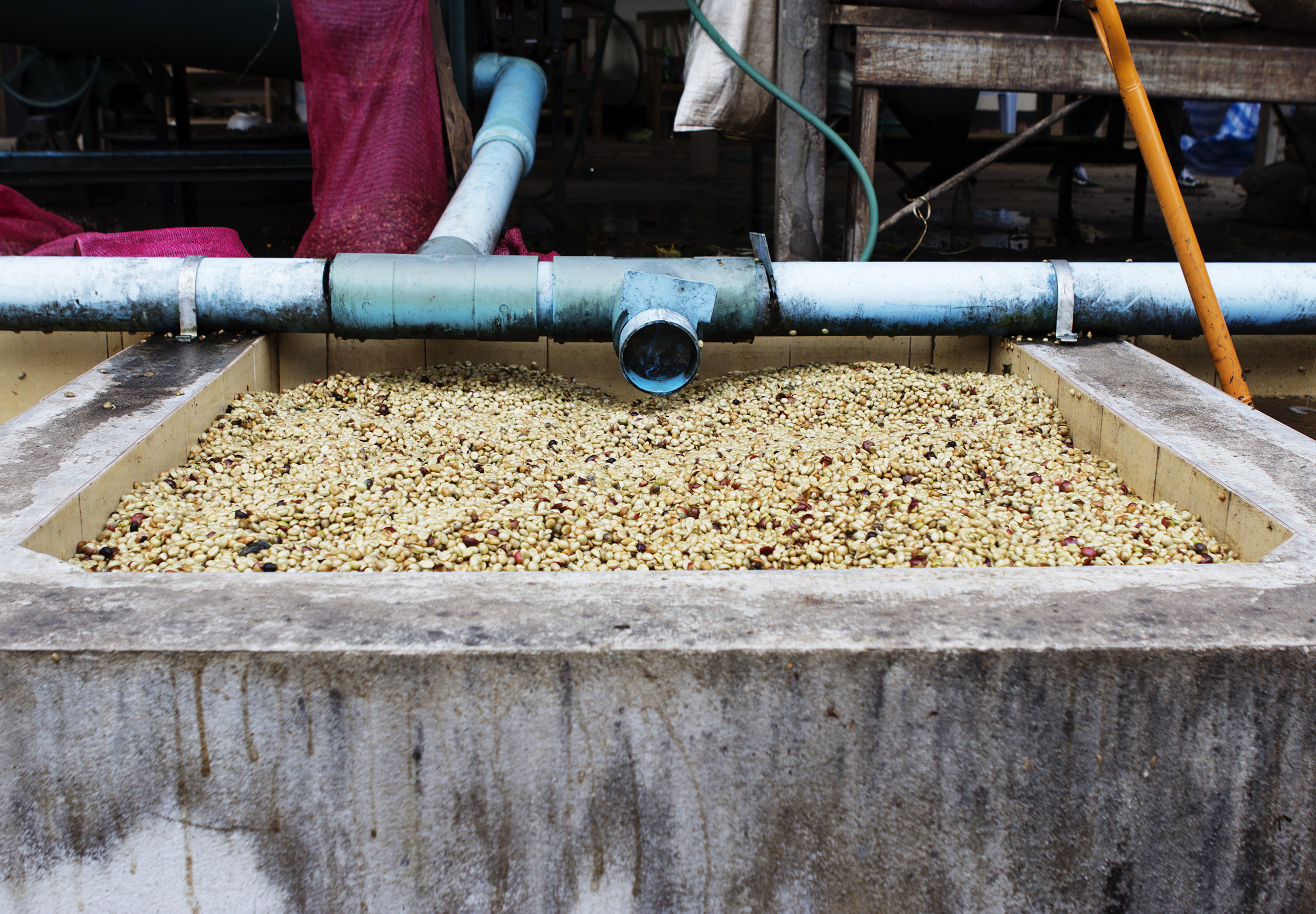The vast majority of Colombian coffee is processed on the farm, using a traditional washed process. The wet mill is referred to as the beneficio. Colombia has a long tradition of processing coffee on the farm — in 1922, 97% of Antioquia’s coffee growers had their own depulper (Mejía et al 2017).
 Colombia’s tradition of processing coffee at the farm dates back more than 100 years.
Colombia’s tradition of processing coffee at the farm dates back more than 100 years.
In general, coffee is pulped on the same day that it is harvested (Giovannucci 2002). Cherries are frequently sorted by hand or screened by size, and they are then floated, to remove debris and any underdeveloped and overripe fruit. Small depulpers, usually powered by an electric motor but sometimes hand-cranked, then separate the seeds from the pulp. The seeds pass directly from the depulper into the fermentation tank, sometimes constructed of concrete, or a simple plastic tub.
 A tiled concrete fermentation tank on a small farm in Risaralda.
A tiled concrete fermentation tank on a small farm in Risaralda.
Most producers ferment the seeds with minimal or no water added to the tank. Fermentation typically proceeds for 12–36 hours, depending on the climate and elevation. At lower elevations, the high temperatures mean that the depulped coffee can be ready for washing the morning after pulping, while at higher elevations the coffee may need more time to ferment.
Usually, the producer determines if fermentation is complete by feeling the texture of the parchment: a gritty, rough texture as the seeds rub against each other indicates that the mucilage has broken down, but if mucilage remains, the beans will feel slippery to the touch.
Since most producers don’t have access to pH meters or other methods to monitor fermentation, the FNC developed a low-tech way to check whether coffee is ready to wash, called the Fermaestro.
The Fermaestro is a conical metal cage that the farmer fills with depulped coffee. As the mucilage breaks down, the volume of the coffee in the Fermaestro decreases,